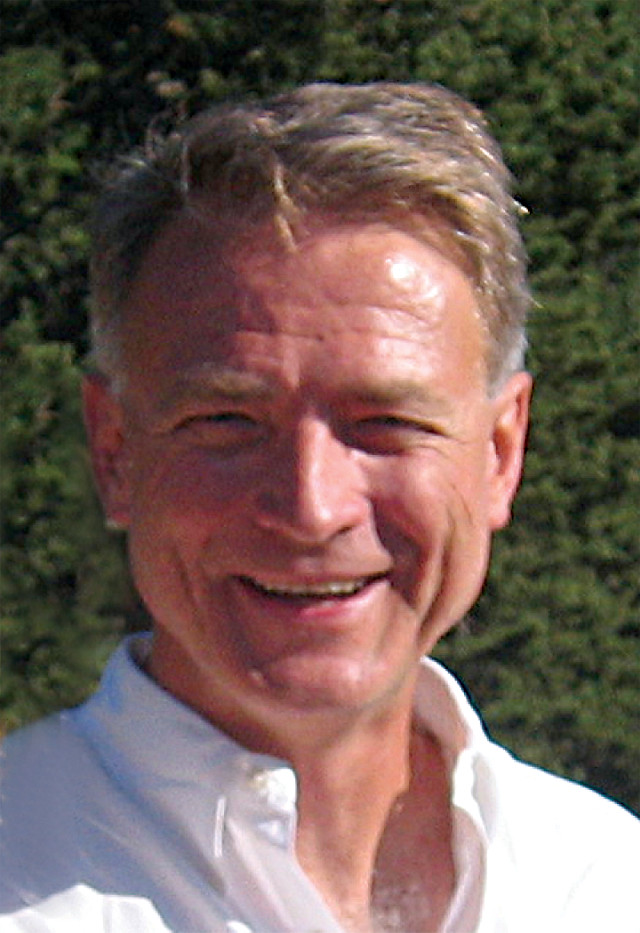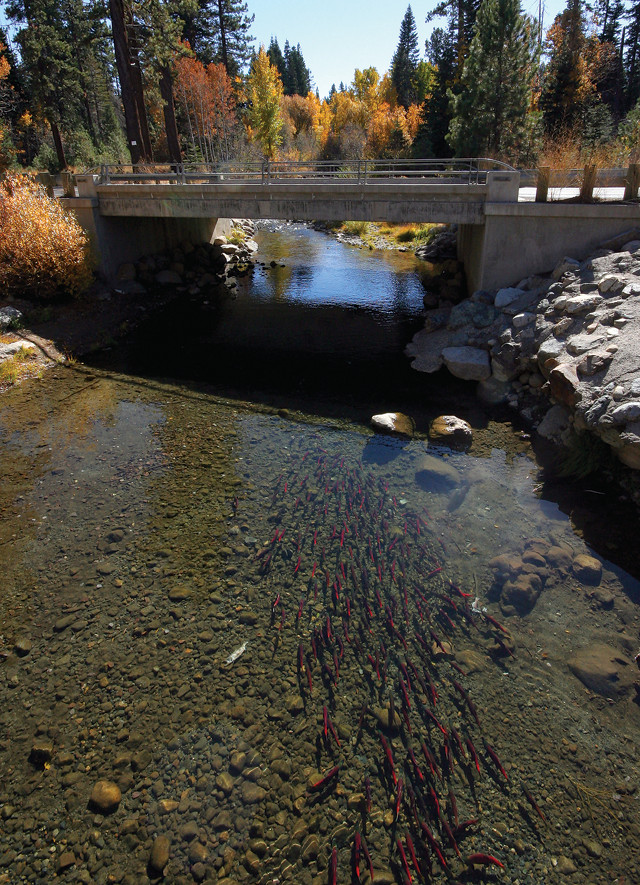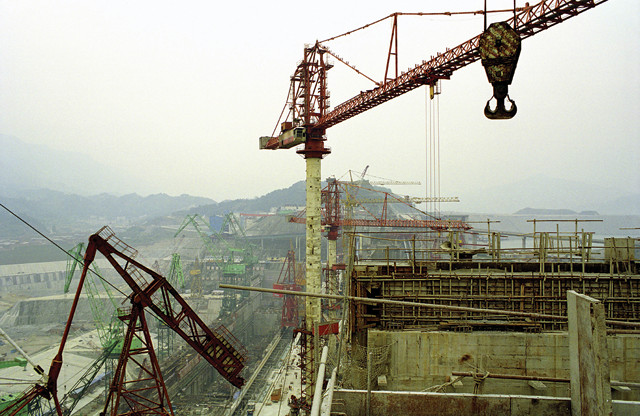
by Nate Burgess Wednesday, May 23, 2018

Matt Kondolf. Credit: Courtesy of Matt Kondolf
As a fluvial geomorphologist teaching in the Landscape Architecture and Environmental Planning Department at the University of California at Berkeley, Matt Kondolf is an ambassador from the earth sciences to landscape designers and environmental planners. Kondolf’s research in river management ranges from the impacts of urbanization on runoff and sediment yield, to river restoration, to managing salmon populations and fishing. In classes like “Hydrology for Planners” and “Ecological Analysis in Urban Design,” he encourages up-and-coming environmental planners and designers to think carefully about the geologic processes that control river formation, as well as the roles that rivers play within ecosystems. He is also active in the policy discussions that are shaping California’s and the nation’s approaches to river management.
Kondolf recently talked with EARTH’s Nate Burgess about being an earth scientist in an environmental planning department, why salmon matter, and recent adventures on the Yangtze River.
NB: Why did you choose to study the restoration and management of rivers?
MK: It was probably the excitement of seeing geological processes in real time that attracted me so much to rivers. My master’s thesis on the Carmel River [in California] dealt with a management problem, which then led to a restoration strategy related to the management problem. But I think I’ve always been motivated by the applications more than the fundamental principles of the science. The applications and the policy implications are, for me, more compelling.
NB: What is it like working as a scientist in a landscape architecture and environmental planning department as compared to a traditional geology department?
MK: It is quite different. I think a lot of it is that the students are more interested in applications: design, planning and management. Most of the time, I am one of the only two scientists in the room. And it has taken me a while to work with some of the students in the program, because some of them have a background in art or design fields. So my job is really to translate the science into terms they can understand and to motivate them, to intrigue them, to try to collect information and interpret it and try to understand the processes that they need to address in their designs, such as runoff, infiltration, reading the landscape for old landslide deposits, and that sort of thing.
The colleagues I work with are also quite a diverse group and quite different from what you would find in a traditional geology department. Fortunately, I still go to professional meetings, I work with other [geology] colleagues, and there are geologists on campus, so I’m not cut off from my home field.

Spawning salmon make their way up Taylor Creek in California. Kondolf researches salmon migration barriers in Mediterranean-climate waterways. Credit: ©iStockphoto.com/Kippy Lanker
NB: When is the recreational value of a river more important than its ecological value, and vice versa?
MK: I think it boils down to context. When you are in a very urban context, so long as the water quality has been addressed, the recreational benefits are probably much more compelling than the ecological benefits that you can achieve in such an urban place.
There is also the issue of what types of ecological benefits are even possible in a river. For example, in the Seattle metropolitan area, a lot of the streams have healthy runs of salmon. Having such an important ecological resource would elevate the relative value of ecological restoration as compared to a recreational use.
But much more typically, in an urban stream, you’ll attract some egrets and there will be some crayfish or three-spined sticklebacks [a fish species] in the stream, but ecologically the stream isn’t so important. And, given the fact that you have this urban population which may be starved for open space and kids who are otherwise spending their time in front of video games, there would be all sorts of social benefits that could stem from having a stream to play in. In these cases, I think the social benefits are often going to outweigh the ecological benefits.
NB: Much of your research focuses on salmon-bearing rivers. Why should people care about salmon?
MK: I think one of the most powerful things about salmon as a target species for restoration is that people identify with salmon. They are big enough that people know about them. Their life history is fascinating — going out to sea and coming back to spawn. They are also a favorite food, and sport fishing for salmon is very popular.
Salmon are charismatic megafauna. You’ll often hear ecologists saying that we need to look at all the components of the ecosystem and restoration should just be based on that, and I’ve heard some ecologists pooh-poohing the emphasis on charismatic megafauna. But from a purely practical standpoint, in the United States, I think it is a huge advantage to have a fish like salmon to rally support. And because it is a keystone species, if things are working for the salmon, they are probably going to be working for a number of other species as well. So as long as you are taking an ecosystem restoration approach and not trying to get a population of salmon by any means, then by restoring the river for salmon, you are also usually restoring the river for multiple species and multiple values.

Dozens of dams are under construction upstream of Three Gorges Dam on the Yangtze River in China. This will be the largest and most rapid transformation of a river in human history. Credit: ©iStockphoto.com/Adam Korzekwa
NB: Many people know that dams block salmon spawning routes. What are some less-publicized or less-understood dangers for salmon?
MK: There are other migration barriers. Dams are of course the most obvious and perhaps most common. However, often in smaller streams you also have smaller drops from culverts that are undercut that can still block migration. That’s a problem that is ubiquitous in the Pacific Rim.
And then you have barriers that are not physical but have to do with water quality — such as reaches of rivers that have dissolved oxygen so low that they would be fatal for salmon to swim through. An example is the Loire River in France. There is a native salmon population there that almost went extinct because its migration has been blocked by reaches of very low dissolved oxygen associated with thermal cooling from nuclear power plants along the river. A similar thing has happened in the port of Stockton [Calif.], where the San Joaquin River channel was dredged so deeply to allow large ships to come in that it created a zone of stagnant water. That then combined with all the nutrients coming off agricultural fields upstream to create a eutrophication problem and low dissolved oxygen, which has been a barrier for migration of fish at low flows. The same thing happened in the Delaware River in the Philadelphia harbor — though in that case it was shad [a herring] that were unable to migrate.
Further upstream from Stockton on the San Joaquin River, Friant Dam has diverted so much water that there are two reaches of water that now dry up every year. A dry reach of river is a very effective barrier to fish migration.
NB: Tell me about a particularly exciting adventure related to your research.
MK: In March, I floated the great bend of the Jinsha River, which is the upper Yangtze. I am writing a paper about the cumulative effects of the multiple dams on the Jinsha. It’s a pretty amazing area. The climate is pretty dry there. It had very much the feel of being on a float trip on a river in western North America, except that there were no other rafts on the river. We were the only party, and the folks I was going with — the China Rivers Project — are in fact the only people who ever raft that river. What’s interesting is that although our guides and other entrepreneurs are building up a market for this kind of tourism in China, we passed several dams under construction. They will soon make this an impossible place to go through.
One thing that I learned on this trip was a little more about the development proposals [in the area]. It’s just a free-for-all for building hydroelectric projects. There is a lot of money that has been made in China and elsewhere in Asia selling manufactured stuff to us, and people made wealthy through these industries are looking for places to invest. Hydroelectric dams are evidently appealing investments. So there are dozens of dams that are planned for the Yangtze River system upstream of the Three Gorges [Dam]. It is the largest—and, assuming things don’t get knocked off track by this recent recession, will be the most rapid—transformation of a river basin ever in the world. And it is happening with essentially no cumulative analysis of what the environmental impact or social impacts will be.
© 2008-2021. All rights reserved. Any copying, redistribution or retransmission of any of the contents of this service without the expressed written permission of the American Geosciences Institute is expressly prohibited. Click here for all copyright requests.